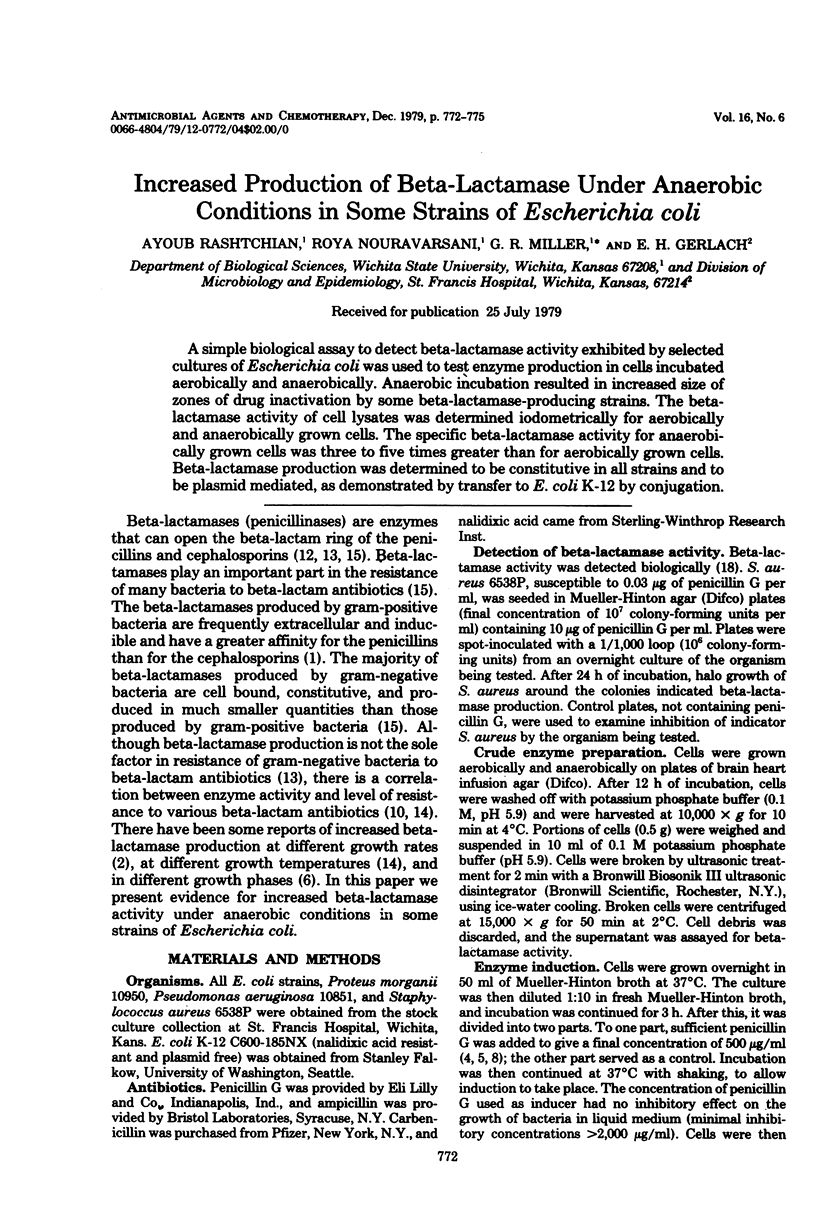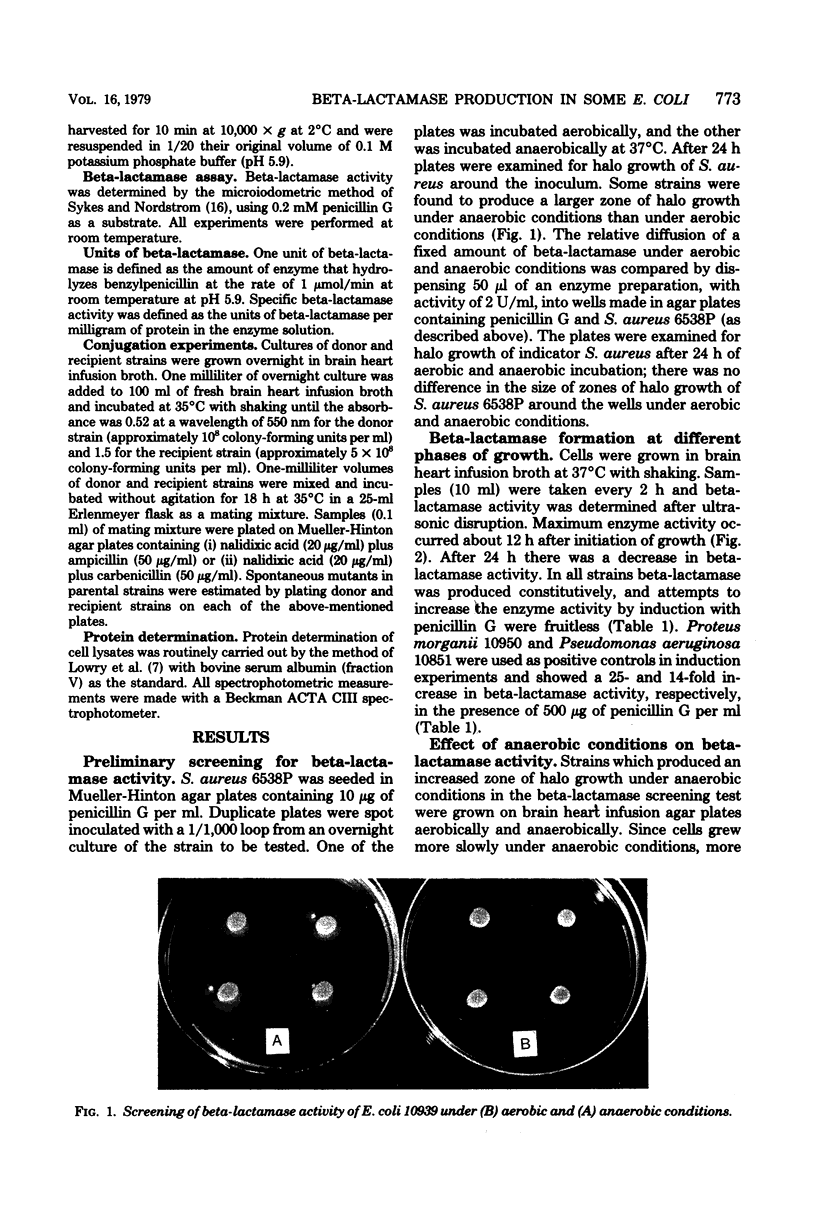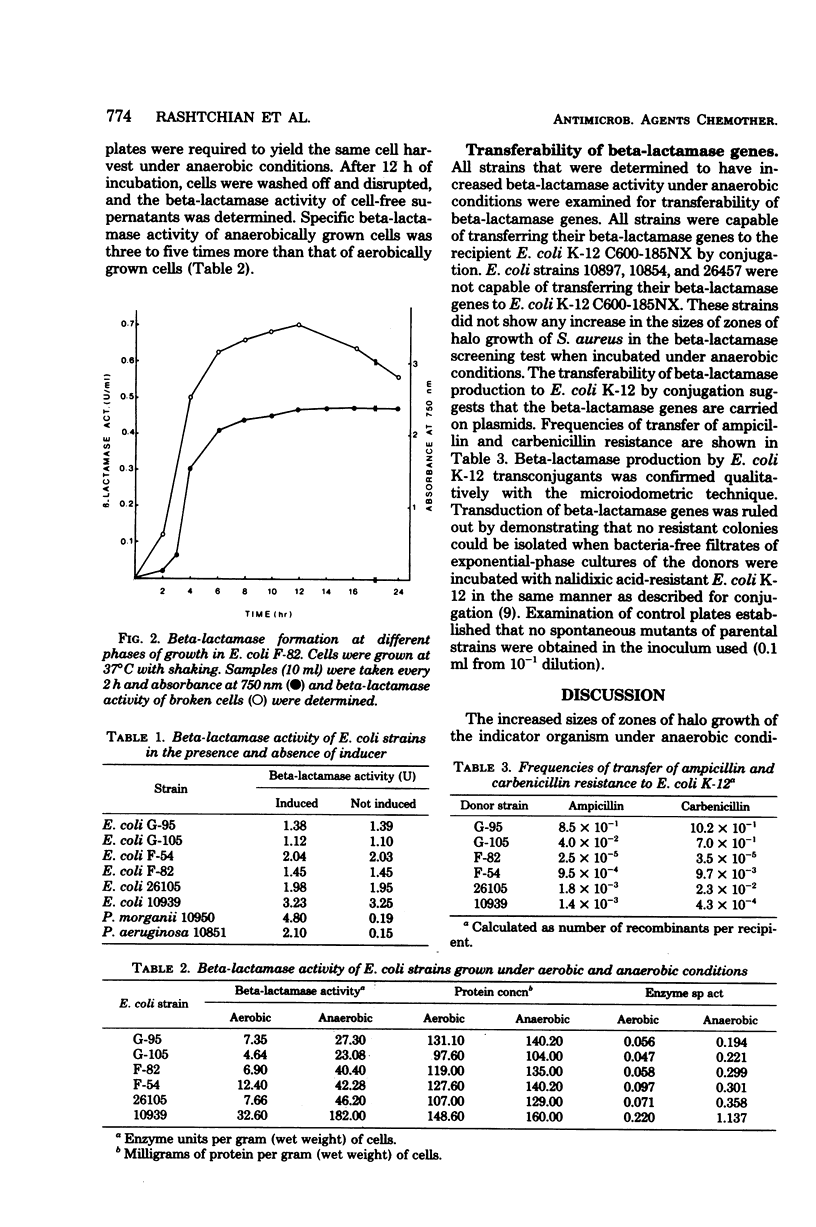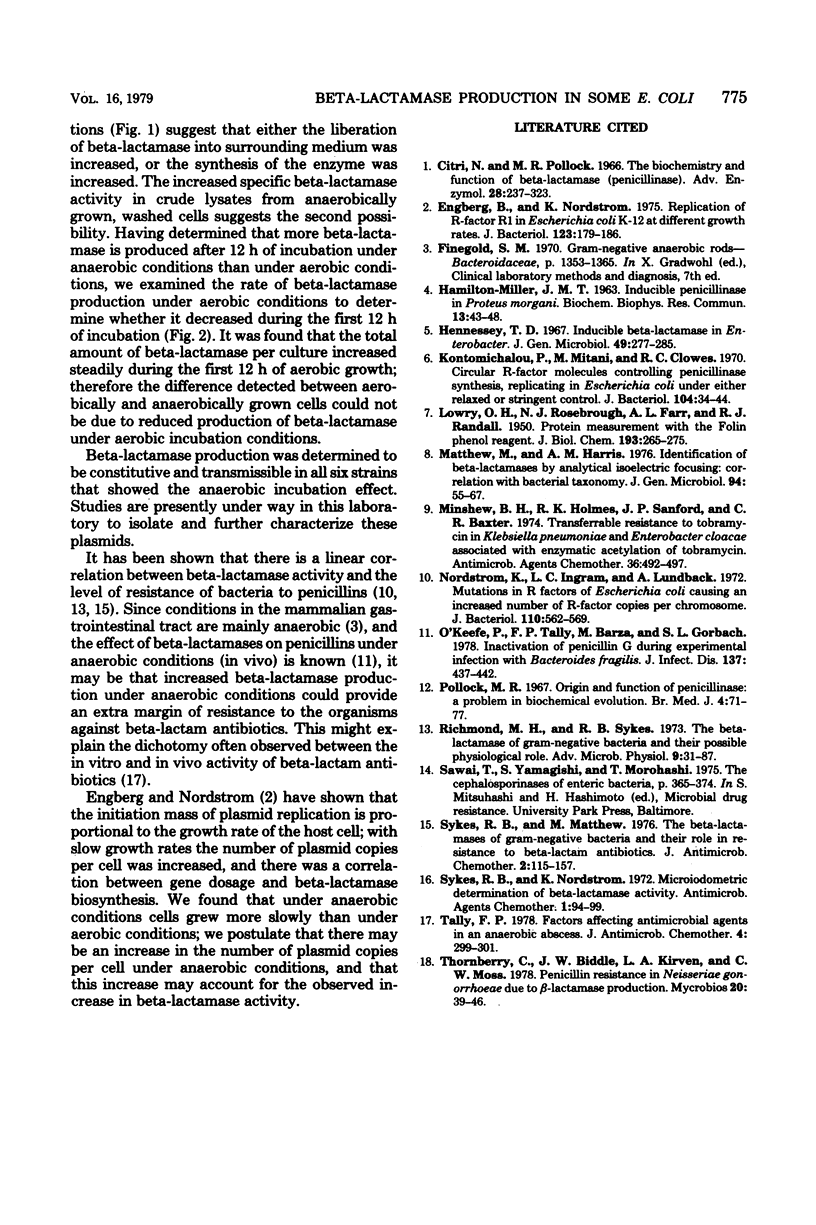Abstract
A simple biological assay to detect beta-lactamase activity exhibited by selected cultures of Escherichia coli was used to test enzyme production in cells incubated aerobically and anerobically. Anaerobic incubation resulted in increased size of zones of drug inactivation by some beta-lactamase-producing strains. The beta-lactamase activity of cell lysates was determined iodometrically for aerobically and anaerobically grown cells. The specific beta-lactamase activity for anaerobically grown cells was three to five times greater than for aerobically grown cells. Beta-lactamase production was determined to be constitutive in all strains and to be plasmid mediated, as demonstrated by transfer to E. coli K-12 by conjugation.
Full text
PDF



Images in this article
Selected References
These references are in PubMed. This may not be the complete list of references from this article.
- Citri N., Pollock M. R. The biochemistry and function of beta-lactamase (penicillinase). Adv Enzymol Relat Areas Mol Biol. 1966;28:237–323. doi: 10.1002/9780470122730.ch4. [DOI] [PubMed] [Google Scholar]
- Engberg B., Nordström K. Replication of R-factor R1 in Scherichia coli K-12 at different growth rates. J Bacteriol. 1975 Jul;123(1):179–186. doi: 10.1128/jb.123.1.179-186.1975. [DOI] [PMC free article] [PubMed] [Google Scholar]
- HAMILTON-MILLER J. M. INDUCIBLE PENICILLINASE IN PROTEUS MORGANI. Biochem Biophys Res Commun. 1963 Sep 10;13:43–48. doi: 10.1016/0006-291x(63)90159-1. [DOI] [PubMed] [Google Scholar]
- Hennessey T. D. Inducible beta-lactamase in Enterobacter. J Gen Microbiol. 1967 Nov;49(2):277–285. doi: 10.1099/00221287-49-2-277. [DOI] [PubMed] [Google Scholar]
- Kontomichalou P., Mitani M., Clowes R. C. Circular R-factor molecules controlling penicillinase synthesis, replicating in Escherichia coli under either relaxed or stringent control. J Bacteriol. 1970 Oct;104(1):34–44. doi: 10.1128/jb.104.1.34-44.1970. [DOI] [PMC free article] [PubMed] [Google Scholar]
- LOWRY O. H., ROSEBROUGH N. J., FARR A. L., RANDALL R. J. Protein measurement with the Folin phenol reagent. J Biol Chem. 1951 Nov;193(1):265–275. [PubMed] [Google Scholar]
- Matthew M., Harris A. M. Identification of beta-lactamases by analytical isoelectric focusing: correlation with bacterial taxonomy. J Gen Microbiol. 1976 May;94(1):55–67. doi: 10.1099/00221287-94-1-55. [DOI] [PubMed] [Google Scholar]
- Minshew B. H., Holmes R. K., Sanford J. P., Baxter C. R. Transferrable resistance to tobramycin in Klebsiella pneumoniae and Enterobacter cloacae associated with enzymatic acetylation of tobramycin. Antimicrob Agents Chemother. 1974 Oct;6(4):492–497. doi: 10.1128/aac.6.4.492. [DOI] [PMC free article] [PubMed] [Google Scholar]
- Nordström K., Ingram L. C., Lundbäck A. Mutations in R factors of Escherichia coli causing an increased number of R-factor copies per chromosome. J Bacteriol. 1972 May;110(2):562–569. doi: 10.1128/jb.110.2.562-569.1972. [DOI] [PMC free article] [PubMed] [Google Scholar]
- O'Keefe J. P., Tally F. P., Barza M., Gorbach S. L. Inactivation of penicillin G during experimental infection with Bacteroides fragilis. J Infect Dis. 1978 Apr;137(4):437–442. doi: 10.1093/infdis/137.4.437. [DOI] [PubMed] [Google Scholar]
- Pollock M. R. Origin and function of penicillinase: a problem in biochemical evolution. Br Med J. 1967 Oct 14;4(5571):71–77. doi: 10.1136/bmj.4.5571.71. [DOI] [PMC free article] [PubMed] [Google Scholar]
- Richmond M. H., Sykes R. B. The beta-lactamases of gram-negative bacteria and their possible physiological role. Adv Microb Physiol. 1973;9:31–88. doi: 10.1016/s0065-2911(08)60376-8. [DOI] [PubMed] [Google Scholar]
- Sykes R. B., Matthew M. The beta-lactamases of gram-negative bacteria and their role in resistance to beta-lactam antibiotics. J Antimicrob Chemother. 1976 Jun;2(2):115–157. doi: 10.1093/jac/2.2.115. [DOI] [PubMed] [Google Scholar]
- Sykes R. B., Nordström K. Microiodometric determination of beta-lactamase activity. Antimicrob Agents Chemother. 1972 Feb;1(2):94–99. doi: 10.1128/aac.1.2.94. [DOI] [PMC free article] [PubMed] [Google Scholar]
- Tally F. P. Factors affecting antimicrobial agents in an anaerobic abscess. J Antimicrob Chemother. 1978 Jul;4(4):299–302. doi: 10.1093/jac/4.4.299. [DOI] [PubMed] [Google Scholar]
- Thornsberry C., Biddle J. W., Kirven L. A., Moss C. W. Penicillin resistance in Neisseria gonorrhoeae due to beta-lactamase production. Microbios. 1977;20(79):39–46. [PubMed] [Google Scholar]



